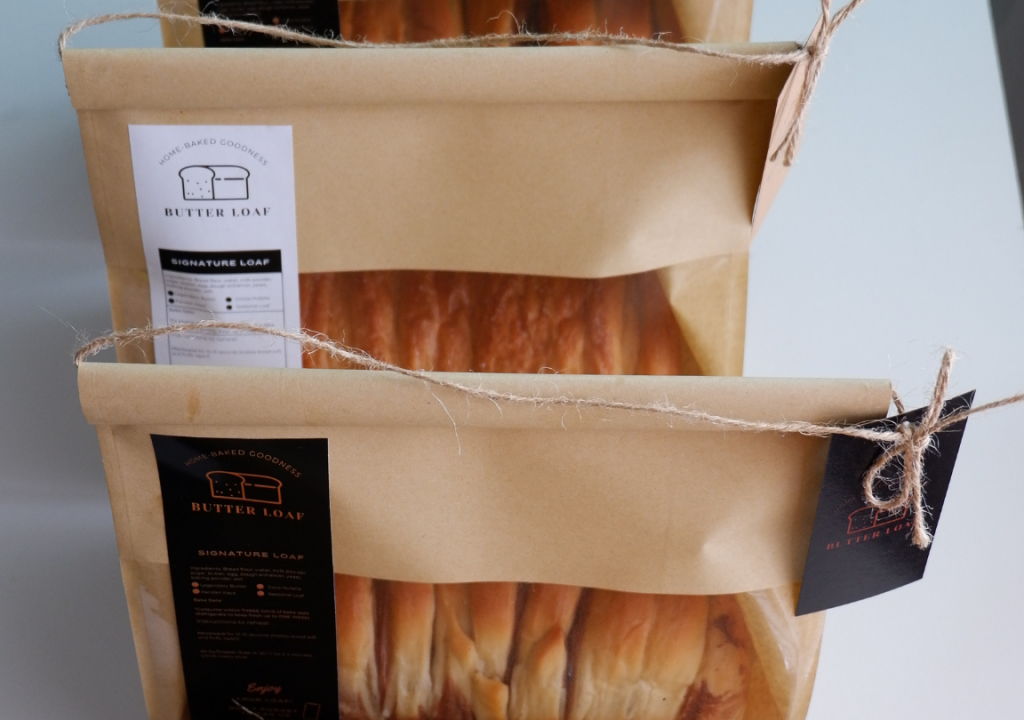Why does bread go dry and stale? This is caused by 2 main factors – moisture movement and starch retrogradation. While bread is cooling down, the moisture will move from the center of the bread to the crumbs and eventually evaporates. At the same time, the starch in flour starts solidify. Both of these causes bread to go dry and stale. How to prevent this you ask?
- How you slice
To minimize moisture evaporating out from the bread, where you slice your bread matters. If you are not finishing your loaf on the same day, considering slicing from the center instead of the end. Once sliced, press the two halves back together to form a whole loaf before storing. By doing so, no open surface will be exposed, reducing the chance of moisture loss.
- Store bread in an airtight container
To further prevent moisture loss, ensure that you store your bread in an airtight container. This will help keep the bread softer for longer.
Our Butter Loaf packaging is made from plastic-lined paper bag, which is ideal for storing our loaves.
- Refrigerate your bread
Since our country is hot and humid, bread goes moldy fast. To prevent this, store unconsumed bread in the fridge. However, this does makes bread dry faster. To enjoy your bread fully, make sure to reheat or toast your bread before consuming.
- Freezing
For longer term storage, bread can be sliced and frozen for up to six months. Make sure to divide your bread to single portion use when freezing. To consume, simple remove one portion from freezer and let it thaw to room temperature. You may consume it as-is or it can be reheated.
Let us know which of this is your go-to method to keep bread fresher for longer.

